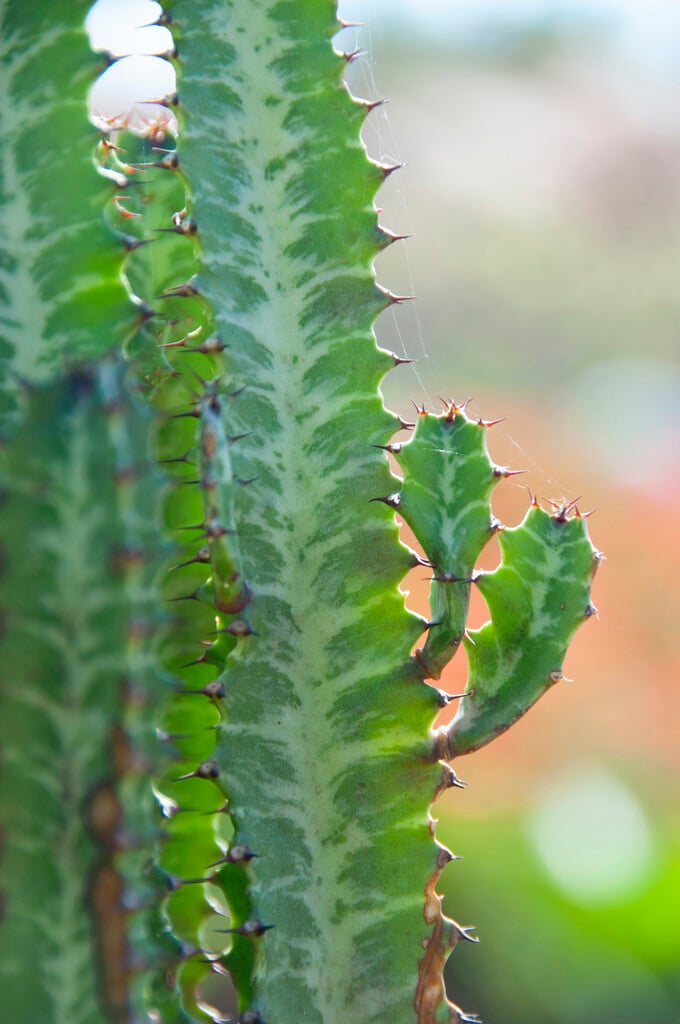Euphorbia trigona
African milk tree
A tender, slow-growing architectural, succulent shrub producing very upright stems and branches to 1.8m (6ft) high. These are green and three to four sided with short-lived, oval, mid-green leaves and persistent reddish-brown spines produced along the ridges of the stems. Along each side of the stems are variable, V-shaped bands in pale grey-green. Small, insignificant pale-green flowers can be produced in spring and summer at the tops of the stems, but these are unlikely to be produced on plants when grown in the home
Size
Ultimate height
2.5–4 metresTime to ultimate height
10–20 yearsUltimate spread
0.5–1 metresGrowing conditions
Moisture
Well–drainedpH
Acid, Alkaline, NeutralColour & scent
| Stem | Flower | Foliage | Fruit | |
| Spring | Green | Green | Green | |
|---|---|---|---|---|
| Summer | Green | Green | Green | |
| Autumn | Green | Green | ||
| Winter | Green | Green |
Position
- Full sun
- Partial shade
Aspect
South–facing or West–facing or East–facing
Exposure
ShelteredDrought resistance
Yes Hardiness
H2Botanical details
- Family
- Euphorbiaceae
- Native to GB / Ireland
- No
- Foliage
- Evergreen
- Habit
- Columnar upright
- Potentially harmful
- Humans/Pets: IRRITANT to skin/eye, harmful if eaten. Wear gloves and other protective equipment when handling. For further information and contact numbers regarding pets, see the HTA guide to potentially harmful plants
- Genus
Euphorbia can be annuals, perennials, shrubs or succulents, with milky sap and small flowers held within cupped, often colourful bracts
- Name status
Correct
- Plant range
- C Africa
How to grow
Cultivation
Grows best in well-drained soil, in full sun to partial shade. See houseplant cacti and succulent cultivation for further details
Propagation
Propagate by cuttings in spring or early summer; dip cut surfaces in charcoal or lukewarm water to prevent bleeding
Suggested planting locations and garden types
- Houseplants
- Patio and container plants
- Conservatory and greenhouse
Pruning
Prune when required to reduce size in early spring
Pests
May be susceptible to mealybugs
Diseases
Generally disease-free
Get involved
The Royal Horticultural Society is the UK’s leading gardening charity. We aim to enrich everyone’s life through plants, and make the UK a greener and more beautiful place.
